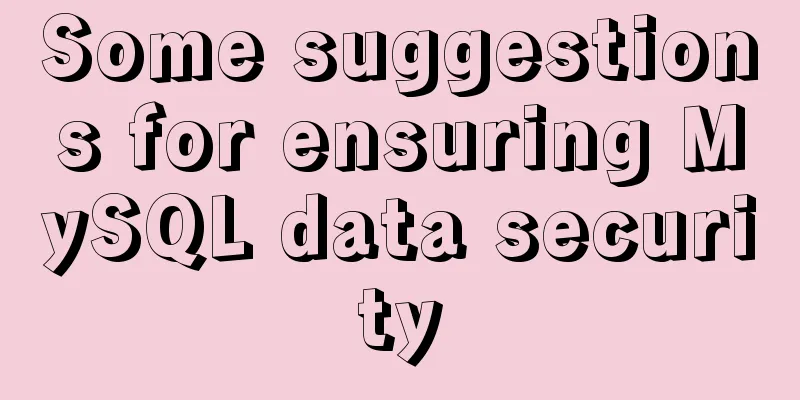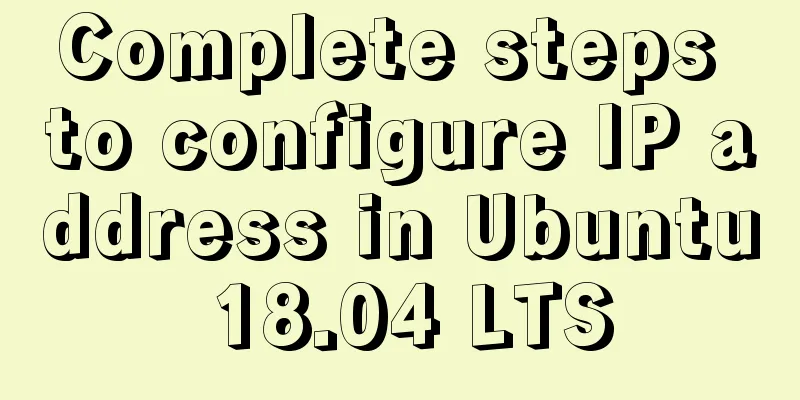Some suggestions for ensuring MySQL data security

|
Data is the core asset of an enterprise and one of the most important tasks for an enterprise. If you are not careful, there is a high risk of data being leaked unintentionally or even stolen maliciously by hackers. Every year, there are several major incidents in the industry, such as a well-known or unknown company being hacked (a homonym for "拖库", which means that the entire database is stolen by hackers). From the perspective of data security, it can also be divided into external network security and internal operation security, which will be discussed below. Internal Operational Security Policy 1. Whether to revoke all DBA permissions Imagine if the DBA has no authority, how can daily DB operation and maintenance work and emergency troubleshooting be carried out? Therefore, it is recommended that before a mature automated operation and maintenance platform is established, too many permissions of the DBA should not be roughly revoked, otherwise it may lead to reduced work efficiency and even the DBA may have a negative emotion of being distrusted. 2. MySQL layer security strategy
3. MySQL account permission rules
mysql> delete from mysql.user where user!='root' or host!='localhost'; flush privileges; mysql> drop database test;
4. About data backup Remember, making a full data backup is the last straw when the system crashes and cannot be repaired. Backup data can also be used for data auditing or to pull data sources from data warehouses. Generally speaking, the backup strategy is as follows: perform a full backup once a day and regularly perform additional backups on the binlog, or directly use the binlog server mechanism to transfer the binlog to other remote hosts. With full backup + binlog, you can restore to any point in time as needed. Special reminder: When using xtrabackup streaming backup, consider using encrypted transmission to prevent the backup data from being maliciously intercepted. External network security strategy In fact, operating system security and application security are more important than the security policy of the database itself. Similarly, the system security of the application and its server is also very important. Many data security incidents are caused by invading the application server through code vulnerabilities, then probing the database and finally successfully deleting the database. 1. Operating system security recommendations
2. Application security recommendations
Finally, we would like to say that any brilliant security strategy is not as important as the security awareness of internal employees. There was a case in the past where an employee's PC was accidentally infected, resulting in the theft of intranet data. Safety is no small matter and everyone should keep it in mind. When it comes to data security, you can sacrifice some convenience, but not too much, otherwise the gain may not outweigh the loss. The above are the details of some suggestions for ensuring MySQL data security. For more information about MySQL security suggestions, please pay attention to other related articles on 123WORDPRESS.COM! You may also be interested in:
|
<<: How to solve the front-end cross-domain problem using Nginx proxy
Recommend
Detailed explanation of the order of Mysql query results according to the order of ID in in()
Detailed explanation of the order of Mysql query ...
Sharing of experience on repairing MySQL innodb exceptions
A set of MySQL libraries for testing. The previou...
Tutorial on how to install htop on CentOS 8
If you are looking to monitor your system interac...
React method of displaying data in pages
Table of contents Parent component listBox List c...
mysql implements adding time automatically adding and updating time automatically updating operation
Time fields are often used in database usage. Com...
Steps to deploy Spring Boot project using Docker
Table of contents Create a simple springboot proj...
Perfect solution to the problem of MySQL shutting down immediately after startup (caused by ibdata1 file corruption)
The mysql on a server in the computer room had be...
JavaScript recursion detailed
Table of contents 1. What is recursion? 2. Solve ...
Detailed analysis of the principles and usage of MySQL views
Preface: In MySQL, views are probably one of the ...
Reasons why MySQL 8.0 statistics are inaccurate
Preface Whether it is Oracle or MySQL, the new fe...
Use CSS blend modes and SVG to dynamically change the color of your product images
A few days ago, I saw an example written by @Kyle...
How to set the memory size of Docker tomcat
When installing Tomcat in Docker, Tomcat may over...
Javascript destructuring assignment details
Table of contents 1. Array deconstruction 2. Obje...
Vue makes a simple random roll call
Table of contents Layout part: <div id="a...
How to uninstall and reinstall Tomcat (with pictures and text)
Uninstall tomcat9 1. Since the installation of To...









